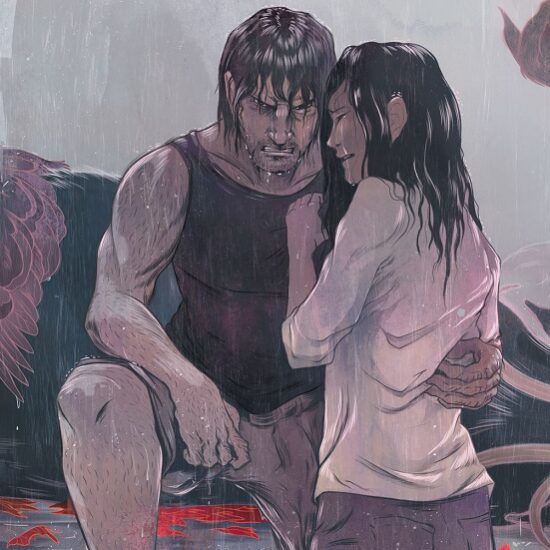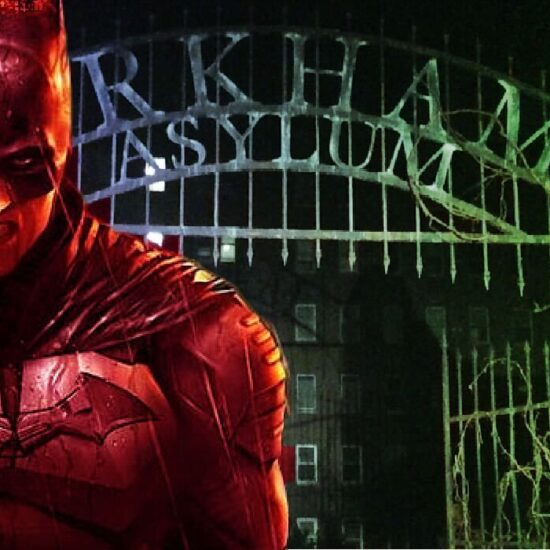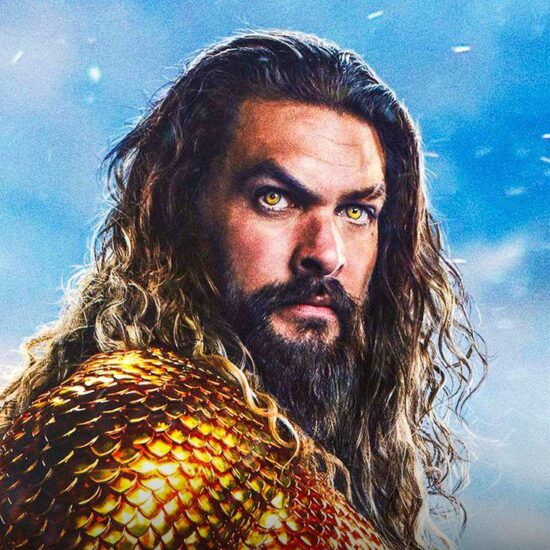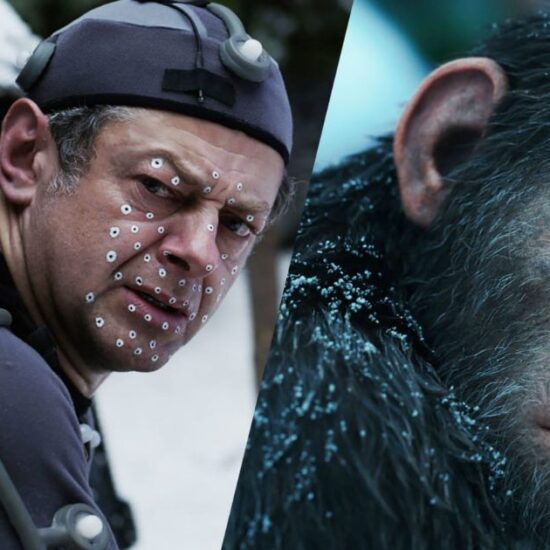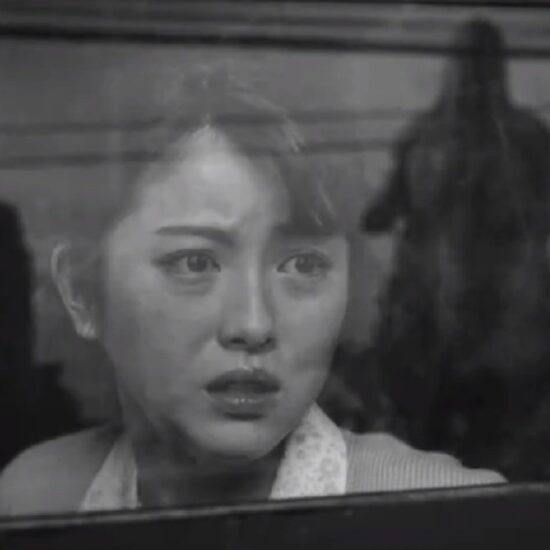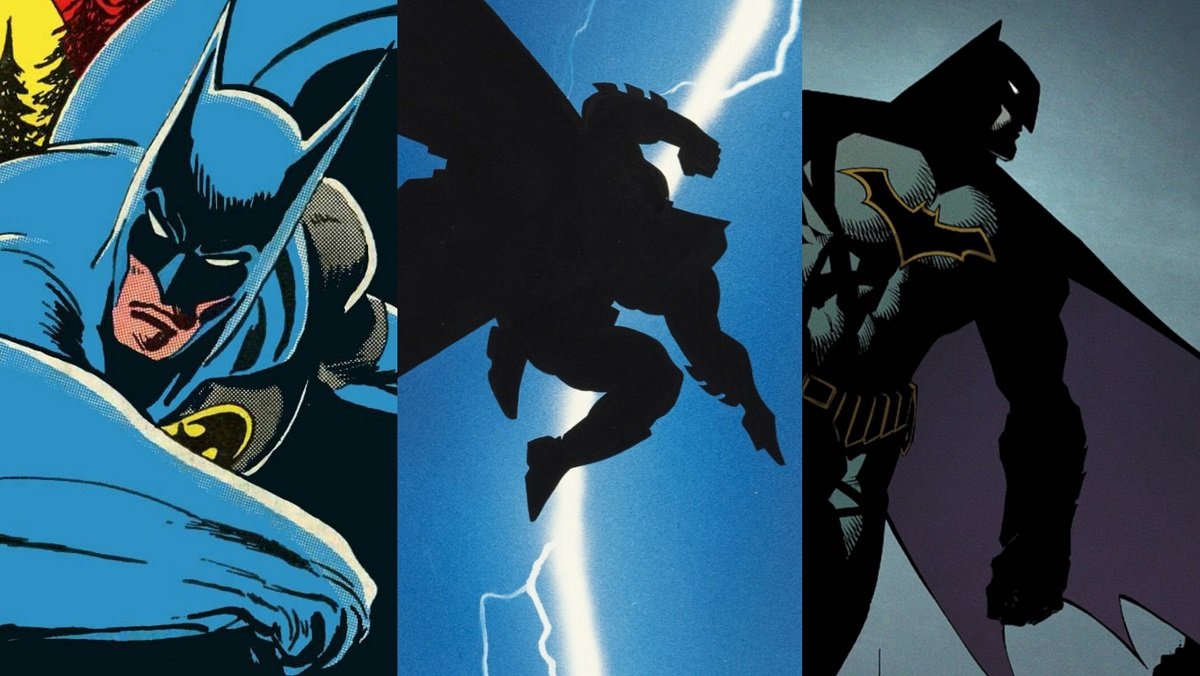
For over eighty years, DC Comics has been continuously publishing Batman and Detective Comics. And in that time, they have produced some of the best, most creative runs on any superhero comic book series ever. So many in fact, it was hard to narrow them down to a “ten best.” But for our money, the following are the greatest creator runs by a specific writer or writer/artists combo in the history of the Dark Knight.
10. Doug Moench and Kelley Jones

Writer Doug Moench and artist Kelley Jones were a dream team on the Batman titles, producing a 42-issue run from 1995 to 1998. Issues that leaned heavily on supernatural stories and good old-fashioned detective yarns. This writer/artist duo picked up from where the Knightfall Saga left off. That 1993 story saw Batman seriously injured and replaced for a time. Their mid-’90s run was a back-to-basics approach, after two years of different characters under the cowl, like Azrael and Dick Grayson.
Moench’s propensity for the spookier side of Batman lore was perfect with Jones’ art style, which often made Batman’s villains look more grotesque than ever. Although the two had a lengthy run on the ongoing title, we can’t forget to mention their Batman and Dracula trilogy. These were a series of out-of-continuity stories that told what-if style tales about Batman as a vampire. When you combine these three Elseworlds stories with their regular run in the ongoing Batman title, it all makes for a truly memorable run on the character.
Batman 516-552 (1995-1998) Batman and Dracula: Red Rain (1991), Batman: Bloodstorm (1994), Batman: Crimson Mist (1998)
9. Paul Dini

Writer Paul Dini became a Batman legend in another medium outside of comics, before tackling the Dark Knight’s adventures in print. As a producer and writer on Batman: The Animated Series, Dini wrote several iconic episodes, including redefining Mr. Freeze in “Heart of Ice,” and co-created Harley Quinn. Not to mention writing both video games Arkham Asylum and Arkham City. But years after the show ended, Dini did a significant run of Batman stories in Detective Comics and Batman: Streets of Gotham.
Working together primarily with artists Dustin Nguyen and Don Kramer, Dini wrote stories that expanded and gave depth to newer villains like Hush. He also wrote several one-and-done mysteries stories, once that reflected some of his best work on the animated shows. While his non-comics Batman stories might have had a greater impact on popular culture, his run on the character in the pages of the Dark Knight’s birth medium of comic books shouldn’t be forgotten.
Batman: Streets of Gotham #1-4, #7, #10-14, #16-21, DCU Holiday Special #1, Detective Comics #821-824, #826-828, #831, #833-834, #837-841, #843-850, #852, (2006-2009)
8. “New Look” Batman

When most people talk about the best Batman and Detective Comics runs, most people begin in the ‘70s. But a very important Batman run happened in 1964 -1968, which literally saved the character from irrelevance. For much of the ‘50s/early ’60s, the restrictive Comics Code censors neutered Batman as a character. Instead of fighting criminals, he fought aliens and wacky monsters in stories mainly aimed at 6-year-olds. And Bob Kane’s art (and those of his copycat ghost artists) was hopelessly dated in an era of Marvel heroes. Sales slipped badly, and something needed to be done. Legend has it that if DC couldn’t raise sales on the Batman books, they would cancel one or both of them.
So DC editor Julius Schwartz hired veteran writers John Broome, Gardner Fox, and artist Carmine Infantino to revamp Batman, just as they had for the Flash. Infantino illustrated every other issue of Detective, with longtime penciler Sheldon Moldoff now instructed to mimic Infantino’s art, not Bob Kane’s. The stories featured a lot of one-off bad guys, and dynamic artwork. And with Batman actually being a detective for the first time in years. This era also gave us the iconic yellow oval Bat emblem and introduced Batgirl and Poison Ivy. This 1964-68 run of Batman revitalized the character for younger readers. Many who saw Batman as their dad’s hero. Its success led directly to the ABC creating the TV series. Which, of course, mercilessly spoofed the comics, but the comics themselves remain a retro blast to read.
Detective Comics #327-371, Batman #164-200 (1964-1968)
7. Steve Englehart and Marshall Rogers

This run often gets forgotten, thanks to the long shadow of game-changing work from Denny O’Neill. And, it was only eight issues long, running in the late ‘70s. But writer Steve Englehart, famous for work on Marvel titles like Avengers, wrote several character-defining issues of Detective Comics that were some of the best Batman work ever published until that time. Englehart, together with artist Marshall Rogers, really doubled down on Bruce Wayne as a suave, James Bond-style ladies’ man, giving him a femme fatale love interest named Silver St. Cloud.
Together, Englehart and Rogers gave new life to discarded Golden Age villain Dr. Hugo Strange, and introduced the definitive version of the assassin Deadshot. Both characters would become mainstays of Batman’s rogues gallery from then on. One of his Joker stories, “The Laughing Fish,” even found new life as a fantastic episode of Batman: The Animated Series years later. He even made a once-cheesy villain like Doctor Phosphorus cool. Steve Englehart would return years later for a Batman tale here and there. But nothing beats the original Englehart and Rogers combo. Their run was brief, but the impact on Batman was big.
Detective Comics #469-476, 1977-1978
6. Tom King (with various artists)

Writer Tom King had the unenviable task of following up Scott Snyder’s celebrated run back in 2016. Yet King’s Batman introduced lots of new concepts in innovative stories, some of which worked like gangbusters, and a few that landed with a thud (killing off Alfred Pennyworth counts as the latter). But during King’s nearly 100-issue run, he finally deepened the Batman/Catwoman relationship, even if fans were (wrongly) denied their wedding. However, the abruptly ended nuptials of Bruce and Selina were part of a pretty amazing story involving the oft-misused Bane.
King’s run also included the Joker vs. Riddler crime saga “The War of Jokes and Riddles,” a story that stands as one of the great modern Gotham City stories. They paired King with incredible artists during his run — David Finch, Mitch Gerads, Clay Mann, Lee Weeks, Jason Fabok. But especially Mikal Janin, who illustrated Batman the most. But everyone brought their A-game. We eagerly await our first Tom King Batman omnibus, DC Comics. This run one was one of the greats, flaws and all. And yes, one big flaw was killing Alfred. That keeps this entry down one whole notch.
Batman: Rebirth #1, Batman (Vol.3) #1-85, Annuals #1-3, Batman/Catwoman #1-12 (2016-2022)
5. Frank Miller

You thought this run would be way higher on the list, didn’t you? We wouldn’t blame you if you did. The footprint that writer/artist Frank Miller left on the character of Batman is, quite frankly, enormous. Both his Batman: Year One, which he produced with artist David Mazzucchelli, and The Dark Knight Returns, are the most iconic versions of Batman’s “first” and “final” stories ever put to print. And everyone who has adapted Batman in every medium since has found influence in them. And they’re both really, really good.
So why this mid-level placement? Well, both Year One and Dark Knight Returns are just 8 issues long, all together. And his other, later runs on Batman? Well, Miller’s All-Star Batman was so terrible even Jim Lee’s art couldn’t save it. His 2001 Dark Knight Strikes Again is one of the most disappointing sequels ever made in any medium. The third chapter, which had a co-writer and different artist, was just ok. So, in the end, it’s a draw. If we were judging individual stories, then Miller’s Dark Knight Returns and Year One would be at the top. But in terms of extended runs on the Caped Crusader, collectively it’s all about as great as it is awful.
The Dark Knight Returns, Batman: Year One, 1986-1987, The Dark Knight Strikes Again, 2001-2002, All-Star Batman 2005-2008, DKIII: The Master Race (2017)
4. Jeph Loeb, with Tim Sale and Jim Lee

Most of writer Jeph Loeb’s run on Batman was in mini-series format, with one notable run in the regular ongoing Batman title. But man, what a way to leave a stamp on a character. Loeb and artist Tim Sale first worked together on a series of Halloween specials in the mid-90s. However, their pièce de résistance remains the 13-part mini-series The Long Halloween. This intense murder mystery involved almost the entire rouges gallery in key ways, and it had a payoff worthy of the year-long build-up. Every panel of Tim Sale’s artwork is a stunning composition.
This creative team reunited for the underrated sequel, Dark Victory, a few years later, which introduced Robin into the story. But Loeb wasn’t done quite yet. In 2002, he teamed with superstar artist Jim Lee (now DC president) for a 12-part story called Hush. It’s another long-form mystery, but Loeb played to Lee’s strengths and gave him big action in addition to mystery. All of these comic runs stand out as some of the best Batman stories of all time to this day. One can see the fingerprints of these modern classics all over modern Batman films, including the recent The Batman.
Batman: Legends of the Dark Knight Halloween Special, Batman: Madness – A Legends of the Dark Knight Halloween Special, Batman: Ghosts -A Legends of the Dark Knight Halloween Special, Batman: The Long Halloween #1-13, Batman: Dark Victory #0-13, Catwoman: When in Rome #1-6, Batman #608-619 (1994-2004)
3. Scott Snyder and Greg Capullo

The 2011 New 52 reboot of DC was hastily put together, and is largely disliked today. But there was at least one big exception to the quality dip of that reboot everyone agrees on, however. And that is writer Scott Snyder and artist Greg Capullo’s run on the series. This run introduced one of the coolest concepts to the mythology in years, the mysterious Court of Owls, a secret society controlling Gotham for decades. Snyder and Capullo also gave us one of the best Jokers storylines in decades, in The Death of the Family. After decades of Frank Miller’s Year One as being the definitive “early years” Batman, Snyder and Capullo unleashed Zero Year. This was an arguably more epic take on Batman’s first twelve months on the job.
Scott Snyder found a way to combine a psychological take with big superhero action, and it always works. We should add, even before the New 52 reboot, Snyder wrote one of the best Batman stories ever, The Black Mirror. Only that time with Dick Grayson as the Dark Knight and not Bruce Wayne. The Snyder/Capullo run officially ended with the two-part Last Knight on Earth. But they unofficially continued their Batman partnership in the event series Dark Nights: Metal and Dark Nights: Death Metal. Both of which featured Batman in a central role. This one is the most recent of the truly great runs on Batman’s ongoing titles.
Batman (Vol.2) #0-52, #23.2 and Annual #1-4 Batman: Futures End #1; Detective Comics #1000 and Batman: Last Knight on Earth #1-3, Dark Nights- Metal #1-6, and Dark Nights – Death Metal #17 (2011-2018)
2. Grant Morrison (with various artists)

By the time they took on the regular ongoing Batman title in 2006, writer Grant Morrison was already a comics legend. Specifically for Batman, having written the graphic novel Arkham Asylum and given the character a significant part in his JLA run. But they’re take on the Dark Knight’s ongoing series successfully combined elements of every era of the character before, from the ‘50s sci-fi goofiness to ‘70s high adventure, in one wonderful almost surreal run that even saw Batman dead and his former protégé Nightwing replacing him in the role.
Morrison’s run also introduced Bruce’s son Damian Wayne as Robin, now an iconic part of Batman’s lore. Their extended storyline Batman: R.I.P. remains one of the greatest and trippiest Batman stories of all time. They also created new villains that are now legit parts of the rogues gallery, like the Flamingo and Professor Pyg. Combined, it was an epic seven-year run on the character, playing across multiple series and even the event Final Crisis. The art by Adam Kubert, Frank Quitely, Tony S. Daniel, and others also raises this run into the stratosphere.
Batman #655-658, #663-683, Batman & Robin #1-16, Batman #700-702, Batman: The Return of Bruce Wayne #1-6, Batman Incorporated #1-8, Batman: The Return #1, Batman Incorporated #0-13, Batman Incorporated: Leviathan Strikes #1, Batman Incorporated Special #1, Final Crisis (2006-2013)
1. Dennis O’Neil (with Neal Adams, various artists)

After the end of the Batman ’66 TV series, the character’s reputation as a joke was cemented in popular culture. So DC did something drastic and doubled down on returning Batman to his 1939 status as an avenging creature of the night. Writer Dennis “Denny” O’Neil and artist Neal Adams produced 11 issues from 1970 to 73. These stories restored Batman to his role as Gotham’s Dark Knight Detective. They separated Batman from Robin (mostly), making him a brooding loner again. In their stories, they introduced major villains like Ra’s al Ghul and Talia. They made the Joker a homicidal maniac again, and brought back Two-Face after decades.
O’Neil also introduced the concept of Batman as a sexy globetrotting adventurer, in the style of James Bond. While the O’Neil/Adams collaboration only lasted three years. Later, O’Neil wrote dozens of other Batman stories, with collaborators like Irv Novick and Dick Giordano. One of those stories, “Appointment in Crime Alley,” is widely considered one of the best Batman stories ever. O’Neil became group editor of the Batman line by the ‘90s, guiding what other writers did. But his own run is the most influential run on the Dark Knight of any creator to date. Bob Kane and Bill Finger might have created the architecture of Batman, but Denny O’Neil and his artistic collaborators did the rest.
Detective Comics 395,397,404,410, 480-491, Batman 232, 234, 235, 237, 243-248, 251-266, (1970-1980) Batman: Legends of the Dark Knight (1989)










